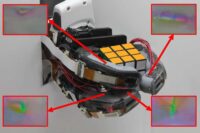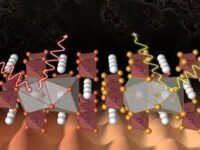Scientists reportedly outlined the discovery of the black hole in a study led by Yale University. Lead author of the study, Professor Pieter van Dokkum, said he stumbled across the black hole while scanning images from NASA’s Hubble telescope.
Hubble has captured images of a massive black hole escaping from its parent galaxy.
This supermassive black hole hurtles across the cosmos, and if it were in our solar system, it could make the 237,674-mile (382,499.226-kilometer) journey from Earth to the moon in just 14 minutes.
It weighs as much as 20 million suns and leaves behind it a trail of stars 200,000 light-years long, twice the diameter of the Milky Way.
Professor Piette said the researchers thought they saw the wake behind the black hole, where gas cooled and could form stars.
The Hubble image shows the black hole at the end of a “pillar” that extends all the way to its parent galaxy.
The outermost end of this “pillar” contains a “very bright junction of ionized oxygen,” which the researchers believe could be the result of heat generated by the motion of the black hole.
Professor Piette said the gas in front of it would be hit because of the supersonic, very high-velocity shocks created by the black hole as it moved through the gas.
An artist’s impression of an escaping black hole.
The researchers believe this “runaway” black hole “escaped” after the two galaxies merged about 50 million years ago, funneling together the supermassive black holes at their centers.
Then, when a third galaxy emerged with its own black hole, the three galaxies mixed together, resulting in a “chaotic and unstable collocation.”
One of the black holes likely “stolen” momentum from the other two and was thrown out of its host galaxy.
According to experts, when the runaway black hole flew in one direction, the remaining two black holes flew in the other direction.
The team now hopes to use NASA’s James Webb Space Telescope (JWST) to study the black hole further and confirm this explanation




GIPHY App Key not set. Please check settings